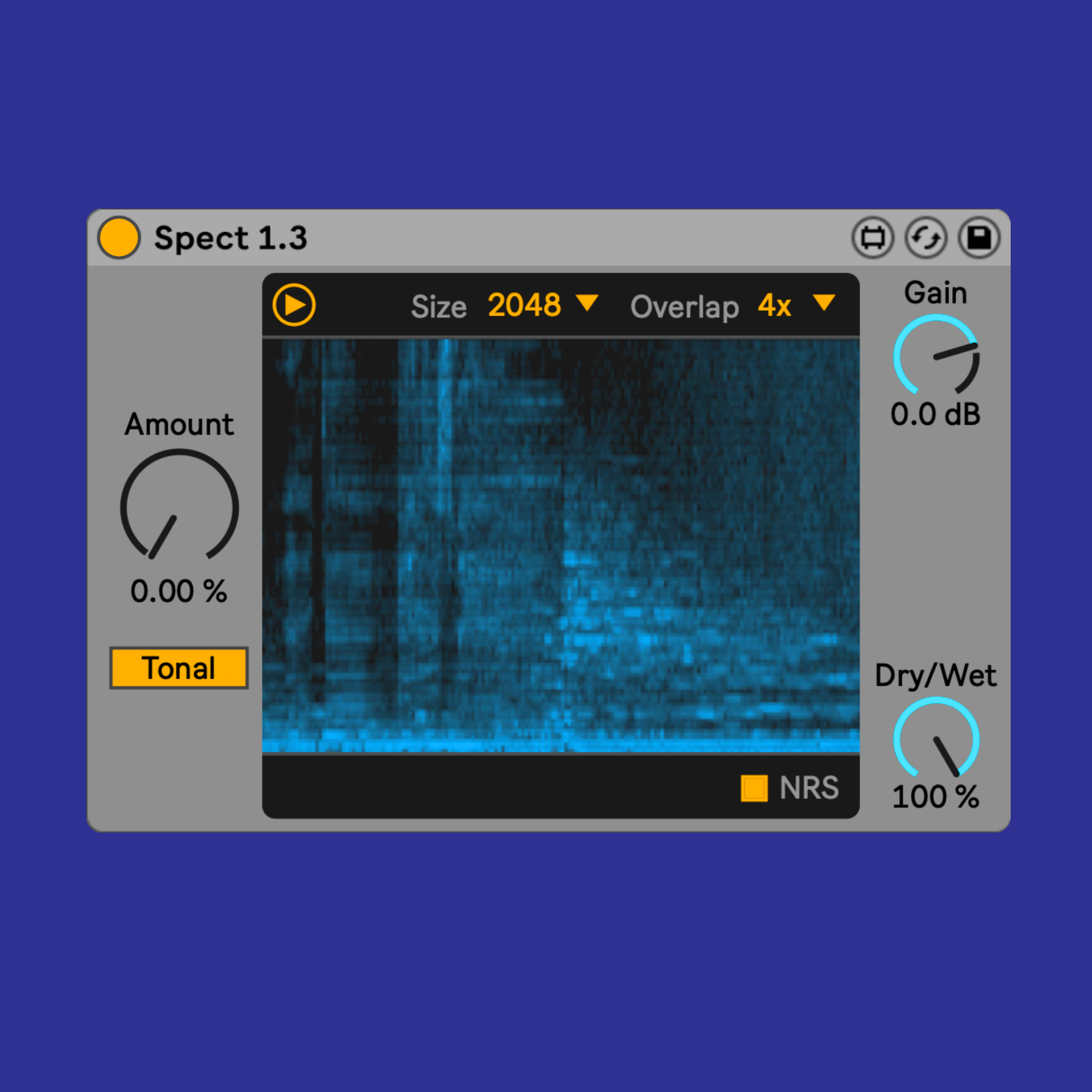Device Details
Overview
| Name | Version: | Spect 1.3 |
| Author: | neshama |
| Device Type: | Audio Effect |
| Description: | Spect is a Max for Live device that played a pivotal role in my journey with Max. I created it so I could have it, embodying the spirit of "Build stuff you'd actually want to use." In essence, this device allows you to gate each frequency range separately. - TL;DR: Spect is a simple FFT Gate. Before diving into the details of Spect, let's briefly understand Fast Fourier Transform (FFT). FFT is a method for breaking down a signal into its individual frequency components. Think of it as dissecting the signal into "bins," which are essentially extracted frequency ranges. I must admit, the last sentence might be disputable. In the context of Spect, I apply gating to each of these frequency bins separately. - The resolution and number of bins depend on the FFT size. A larger FFT size offers higher resolution but comes at the cost of more latency. Additionally, the overlap size impacts how closely successive frequency separations can be achieved (In expanse of CPU). You can think of it as akin to a vocoder, where you split the frequency range into different bands using bandpass filters. This method allows for successful control of frequency ranges and might seem superior to FFT on paper. However, it often introduces phase distortion and can yield less musical-sounding results unless meticulously tuned. Unlike the bandpass filter method, FFT has its advantages. It doesn't exert the same influence on the phase but does come at the expense of the time domain. For an example, an FFT Size of 2048 introduces 2048 samples of latency. Additionally, it does introduce some phase jittering effects, which I am still working to refine, but it might well be an integral part of the unique sound shaping it offers. - A recent addition is NRS (Normalized Reference Signal). The device listens to a normalized version of the same signal, enabling threshold adjustments based on the maximum peak rather than the full scale. This ensures consistent device responsiveness, independent of input gain variations. - In practice, Spect has been an invaluable tool for me in creative sound design. I've used it when I needed to separate the tonal and non-tonal (noise) elements of a sound. It has also proven to be a great tool in mixing, allowing sounds to cut through dense mixes without the burden of non-characteristic frequencies cluttering the mix. In summary, Spect is a versatile device that can be a game-changer in your sound design and mixing adventures. Explore it, experiment with FFT, and unlock its potential to shape your sonic creations. - Release Notes for Spect 1.3: Added Initial Latency: Initial latency of 2048 samples (Due to the initial FFT-Size) instead of what used to be reported as 0 samples. 'Amount' Dial Range Adjustment: Ensured a perceptibly even range for the 'Amount' dial, with behind the scenes scaling curve Minor UI Adjustments: Implemented minor user interface refinements of the 'Screen' section, 'Gain' and 'Mix' dial locations and widen the device width by 2 px. - Made by Daniel Neshama Itach, 2023 Daniel@Itach.me @_neshama |
Details
| Live Version Used: | 11.3.13 |
| Max Version Used: | 8.5.6 |
| Date Added: | Nov 23 2023 11:51:14 |
| Date Last Updated: | No Updates |
| Downloads: | 0 |
| Website: | https://neshama.gumroad.com/l/spect |
| ⓘ License: | None |
Average Rating
Log in to rate this device |
-n/a- |
Comments
No signal passing through on wet. 1.1 worked though
Posted on November 23 2023 by irishmos |
Report Issue
Live 10.1.4 Suite Catalina OS
Posted on November 23 2023 by irishmos |
Report Issue
Same Issue here, but on the newest Version of Live 11 and Win 11. Version 1.2 works fine tho!
Posted on November 27 2023 by fakedubz |
Report Issue
Working great for me on Windows 11, strange. Fantastic device, hope you figure out the issue other people have with it!
Posted on November 28 2023 by RRR |
Report Issue
Amzing job!
Posted on May 01 2024 by mitykas |
Report Issue
Login to comment on this device.
Browse the full library